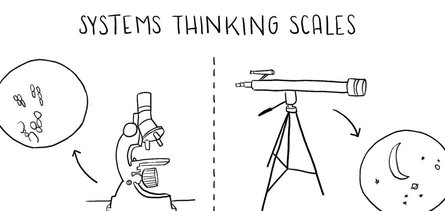
In the last chapter of this series, The 6 Fundamental Concepts of Systems Thinking, I explored some of the key concepts of systems thinking such as interconnectedness, synthesis, emergence, causality and feedback loops. In this chapter, I will delve into what defines a system and move into more detail with stocks and flows in systems (which, for some reason, is often described using a bathtub analogy — something that I find very odd!).
Before I start let me clarify something. Systems thinking (like many fields), has varying opinions, theories, processes, techniques, methods and modes, emerging from different fields of thought and action. My objective in this series is to synthesize as much as I can into short, concise and accessible language that enables access to the complexity, so that more people can understand and design for systems change.